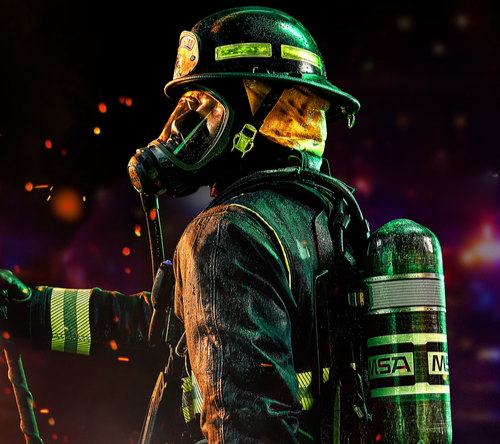By Rob Freese, Senior VP of Sales and Marketing, Globe Manufacturing Company, now part of MSA
The alarming rate of cancer diagnoses among firefighters is very real and very serious. What we know is that firefighters have an increased risk for several types of cancer. Fires produce hundreds of toxic compounds; and some are carcinogenic.
Everyone in the fire industry is at least talking about it. And some are quick to market with what they think the answer might be.
We cannot lose sight of the fact, however, that cardiac events remain the leading cause of duty-related deaths. Firefighting leads to significant cardiovascular strain. Sudden cardiac events account for approximately 45% of all LODDs in the United States each year.
The solutions to both of these problems are complex and involve trade-offs.
It would be relatively easy to make turnout gear into hazmat gear to help protect against cancer-causing particulates and gasses, but that degree of encapsulation would lead to dramatic increases in heat stress. And that gear would make the work of firefighting almost impossible, which leads to the third dimension of protection.
Fighting fires is demanding, physical work requiring maximum athletic performance. To perform like an athlete, turnout gear has to enhance performance and allow for a full range of motion.
Like a 3-dimensional chess game, all of the above must be taken into consideration. Today’s threats are more complex and so helping to keep firefighters safe has become considerably more challenging.
Science-Based Research
A “silver bullet” to solve this 3-dimensional dilemma has been elusive because first we must attain a deeper level of understanding. Meaningful, realistic research on a live fireground and in live training scenarios is critical to tell us what hazards we need to protect against.
The Illinois Fire Service Institute (IFSI) has undertaken extensive cardiovascular and chemical exposure risk studies. These studies incorporated fire dynamics, tactics, job assignments, rehab, decontamination, cleaning, training, and physical fitness.
The research team conducted fire suppression repetitions on a standardized building and contents using real firefighters and tactics, measured what contaminants got on the gear, what off gasses inside the apparatus cab, what residual contamination remains after field decontamination, and what got on the firefighters’ skin and in their blood and urine.
In another study, IFSI exposed and laundered gear multiple times to measure what gets on the gear, how effective launderings are, and what happens to the performance of the gear over time with repeated launderings.
The next step is to translate all of this research to actionable practice for firefighters and departments. Science will inform industry changes that must occur to reduce firefighter carcinogenic and cardiovascular risks.
Risk Assessment: R = T x V x C
As a fire officer, you conduct a risk (R) assessment before every decision you make. You consider what the threats (T) and hazards might be. Then you consider your vulnerability (V) or the probability of those occurring. And finally you consider what the consequence (C) or impact to your department and members would be if encountered.
In many jurisdictions, fire departments are required to perform a risk assessment prior to starting the selection process of structural and proximity firefighting ensembles. In addition to the hazards likely to be encountered, a risk assessment should also consider other factors in order to achieve balanced protection. What types of duties are being performed? What are the department’s standard operating procedures, both on the fireground and in training? How does your geographic location and climate affect the job you have to do?
It is essential that firefighter protection and safety be based on reality. That is the fundamental function of a PPE risk assessment – to determine each department’s reality and, therefore, PPE requirements.
In high-heat stress situations, body core temperature increases, which can impair decision-making, muscle control, and hearing accuracy, eventually leading to heat stroke. Skin absorbs contaminants that can stay in the body for long periods of time. And bulky, heavy turnout gear restricts mobility, therefore limiting efficient performance.
Currently in development are solutions that could help significantly reduce the amount of harmful particulates that get inside turnout gear without adverse physiological or mobility effects. But turnout gear is only a small piece of a complex puzzle.
Who Is Responsible?
Never before in the history of personal protective equipment has there been a time when every facet of the fire industry was focused to help eliminate or reduce a single threat to firefighter health and safety. We are all responsible for attaining success through science, research, and collaboration with the fire service.







